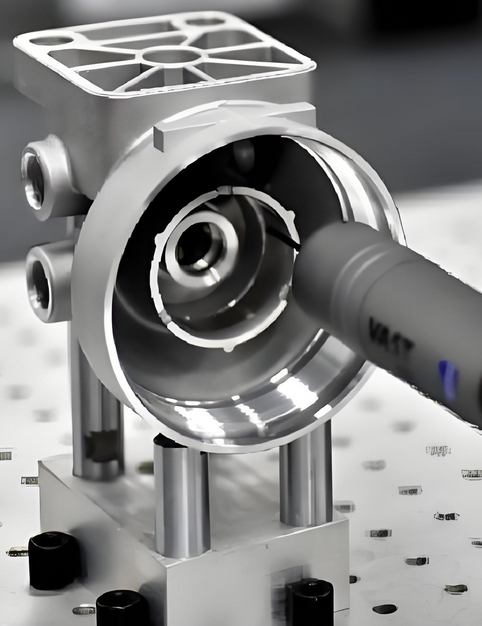Time to read: 6 min

This article provides an in-depth look at vacuum casting, a manufacturing method that excels in producing low-volume parts with high-quality detailing. Ideal for rapid prototyping and small batch production, vacuum casting allows for quick turnaround times and parts with mechanical properties akin to those of injection molding. To harness this technique effectively, a meticulous design process is paramount. This guide offers a comprehensive overview of vacuum casting, from basic principles to advanced design practices, ensuring your project's success through expert geometric recommendations.
Understanding Vacuum Casting
Vacuum casting, also known as urethane or polyurethane casting, utilizes silicone molds to fabricate detailed plastic and rubber components. Conducted under vacuum conditions, this process begins with a precise master model, typically crafted via 3D printing or CNC machining, which is then encased in silicone to form a mold. The vacuum environment ensures bubble-free, high-quality castings suitable for pre-series testing and limited production runs.
Design Considerations for Vacuum Casting
Adhering to a vacuum casting design guide is crucial for process success. Here are the fundamentals and expert tips for optimal vacuum casting results:
Draft Angle
A draft angle is essential for the easy and undistorted removal of plastic parts from the mold. Without an adequate draft angle, parts may adhere to the mold, risking deformation or breakage during extraction. A minimum draft angle of 1 to 2 degrees is recommended, with adjustments based on material, product complexity, and mold size.
Tolerance
Maintain standard tolerances according to ISO 2768 Coarse(C) for vacuum casting. Tolerances can be tighter for critical features but are generally set at +/- 0.5mm or +/- 0.1mm per 30mm, whichever is greater.
Wall Thickness
Vacuum casting offers flexibility in designing varying wall thicknesses within the same part. Wall thickness should balance strength and durability with the need for efficient cooling to avoid brittleness. A minimum wall thickness of 1mm to 1.5mm is advised for small to medium-sized parts, with adjustments for larger parts and material-specific requirements.
Incorporating Undercuts and Overhangs
Undercuts and overhangs present design challenges in molding and casting. Vacuum casting can manage these features effectively, though they may influence mold complexity. Consulting with manufacturing experts ensures accurate and efficient execution of these details.
Bosses
Bosses should be at least 1mm in height and diameter, with wall thickness not exceeding 60% of the nominal thickness to prevent sinking. Design bosses to be robust and minimize the risk of deformation.
Ribs
Ribs enhance strength and reduce warping in large, flat areas. Keep rib thickness below 60% of the wall thickness and limit rib height to less than three times its thickness to avoid shrinkage and sinking effects.
Embossed Details
Ensure embossed text and logos have a minimum depth/height of 1mm and maintain a 1mm gap between letters for clarity. Incorporate draft angles on embossed details to facilitate release from the mold and avoid complex undercuts that may complicate demolding.
Materials for Vacuum Casting
Selecting the right material is vital for vacuum casting. Common materials include ABS-like resins, polyethylene-like and polypropylene-like resins, polycarbonate-like resins, acrylic, silicone resins, silicone rubber, TPU (Thermoplastic Polyurethane), epoxy resin, and polyurethane foam. Each material offers unique properties suitable for specific applications, from consumer electronics to automotive components.
Bringing Your Vacuum Casting Design to Life
Vacuum casting is a cost-effective solution for producing detailed plastic and rubber components in small batches. It is widely used for function testing during product development across various industries. For custom cast parts, consider partnering with a reliable vacuum casting service provider like RapidDirect, which offers comprehensive solutions for prototyping and custom production part needs.
Conclusion
Mastering the art of vacuum casting involves meticulous design consideration and material selection. By following expert guidelines and partnering with skilled service providers, you can efficiently bring your designs to life with high-quality, detailed components.




